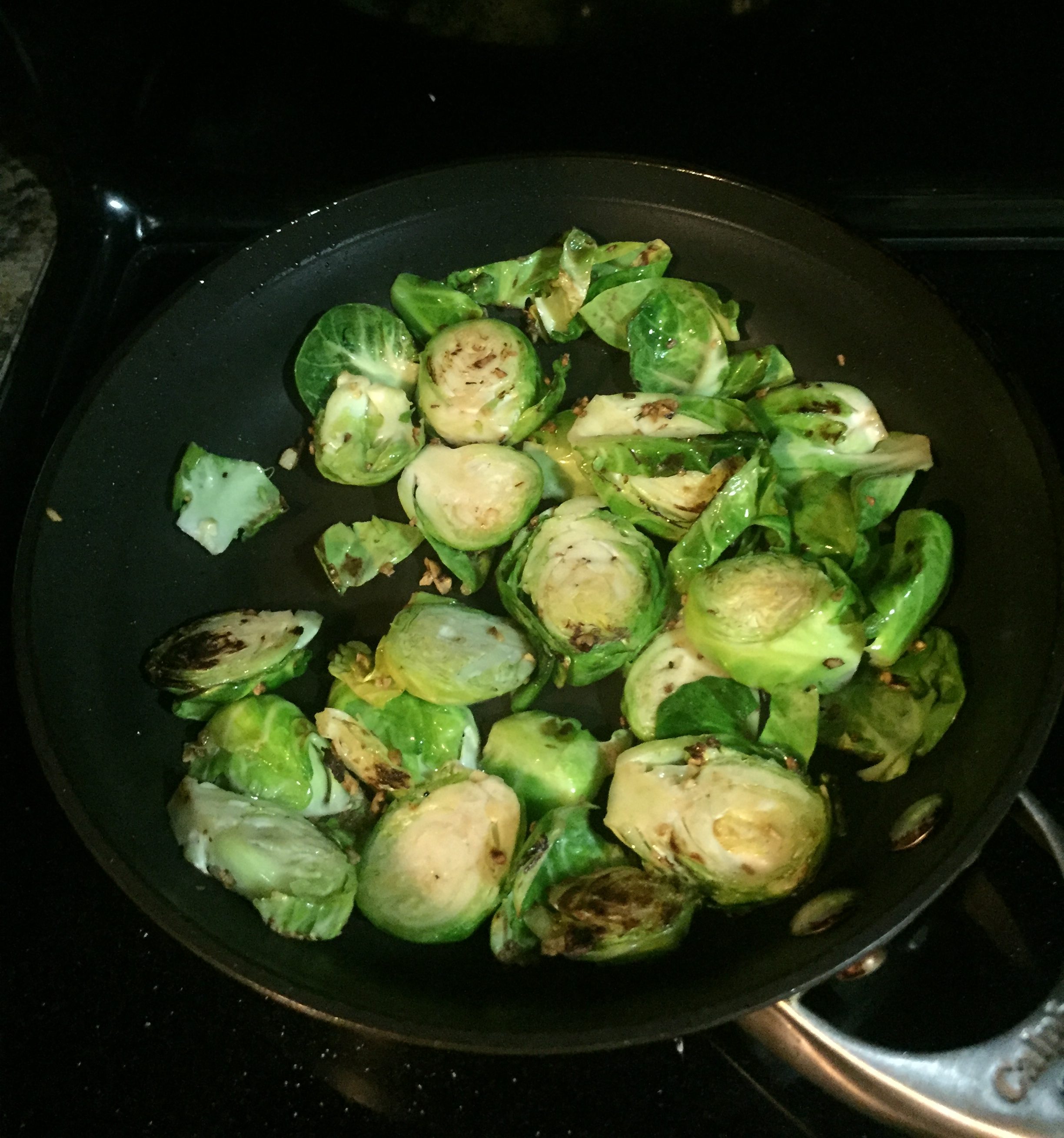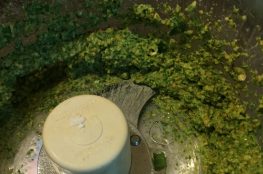Certain ingredients have a habit of going bad in my fridge. At the grocery store, I get inspired by their color, their freshness, or their novelty, but when I get them home I’m more intimidated than inspired. I could tackle that unfamiliar vegetable I bought earlier this morning…or I could make a sandwich. Historically, the sandwich wins.
Beets and Brussels sprouts were particularly intimidating when I first began to purchase them, simply because I knew so many other people who hated them. I remember buying a can of beets and leaving it in my closet for months before finally finding out that I could feed it to the dog (which I promptly did). I was more adventurous with Brussels sprouts (I tried to grow them in my yard, but they attracted too many caterpillars), but they still made me nervous. Imagine my surprise when I learned that both items are foods that I like, and even crave. If you’re wanting to diversify your produce selections, give them both a try.
Beets
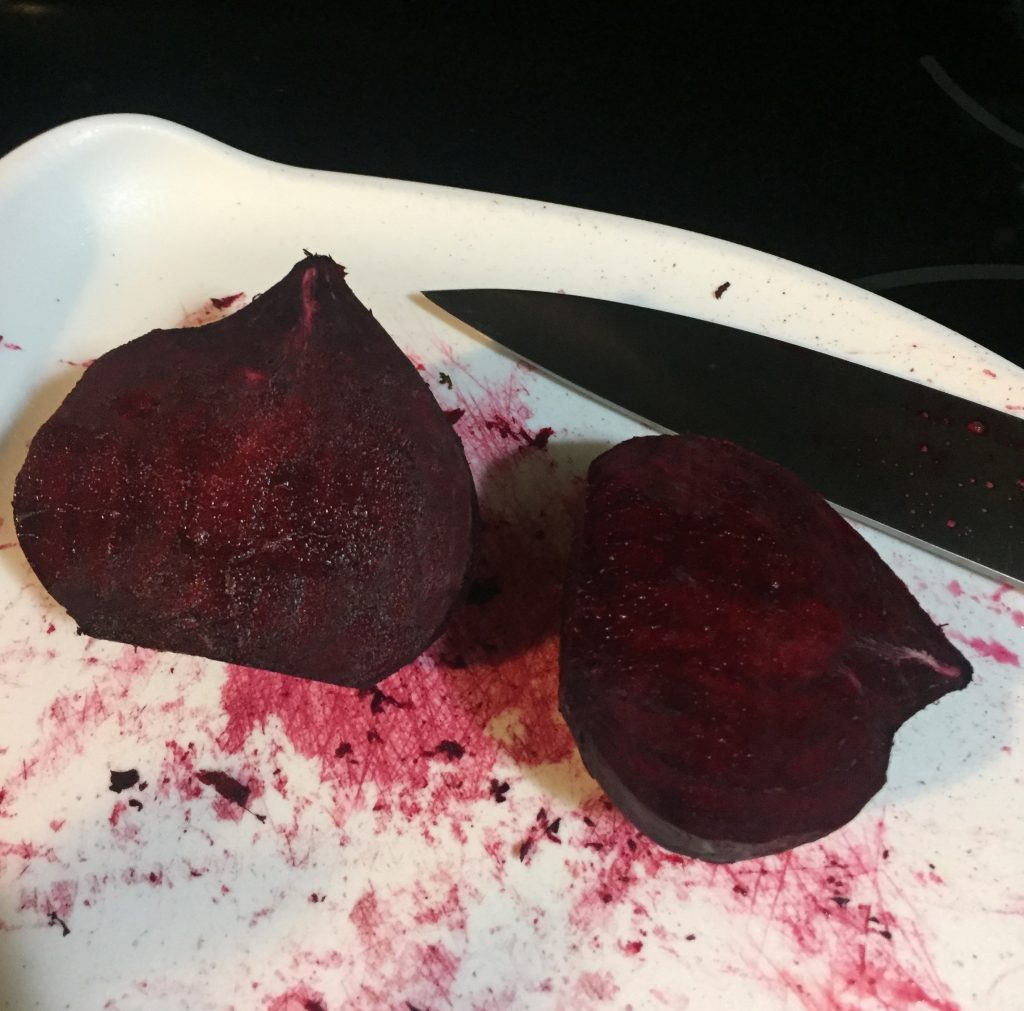
Beets are described as both earthy and sweet, which is true but not easy to imagine if you’ve never eaten one. Beets are sweet in the way a carrot or a sweet potato is sweet (and raw beets are also crunchy like a carrot), but the sugar is more pronounced and can become overwhelming if you don’t temper it with other flavors (which is probably why they are so often found pickled). Imagine combining this sugary flavor with the scent of freshly-dug garden soil and you’ll get an idea of what it means for a beet to be earthy in addition to sweet. Other vegetables that have a earthy quality include Swiss chard, mushrooms, and asparagus, but beets are the quintessential example.
You’ll usually find two types of beets at your store: red and gold. The red ones have a stronger flavor and spatter vivid purple juice all over your kitchen, so consider starting with gold beets if you’re feeling nervous. Beets are a root vegetable, so buy organic when possible, as they will absorb chemicals from the soil. They are sold with and without the greens; although the greens are edible, I would recommend buying them without the greens if you’re a first-time purchaser. Not only will they keep longer, but you’ll only have one unfamiliar element to worry about rather than two.
Like carrots, beets must be well-washed and are often peeled before using, but (like other root vegetables) many of the nutrients are found just below the skin. For this reason, I’ve taken to peeling my beets with a spoon, the way that many chefs recommend peeling fresh ginger. If I’m planning to roast the beets whole, I peel them after roasting, but if I’m going to use them raw or slice them before cooking, I peel first.
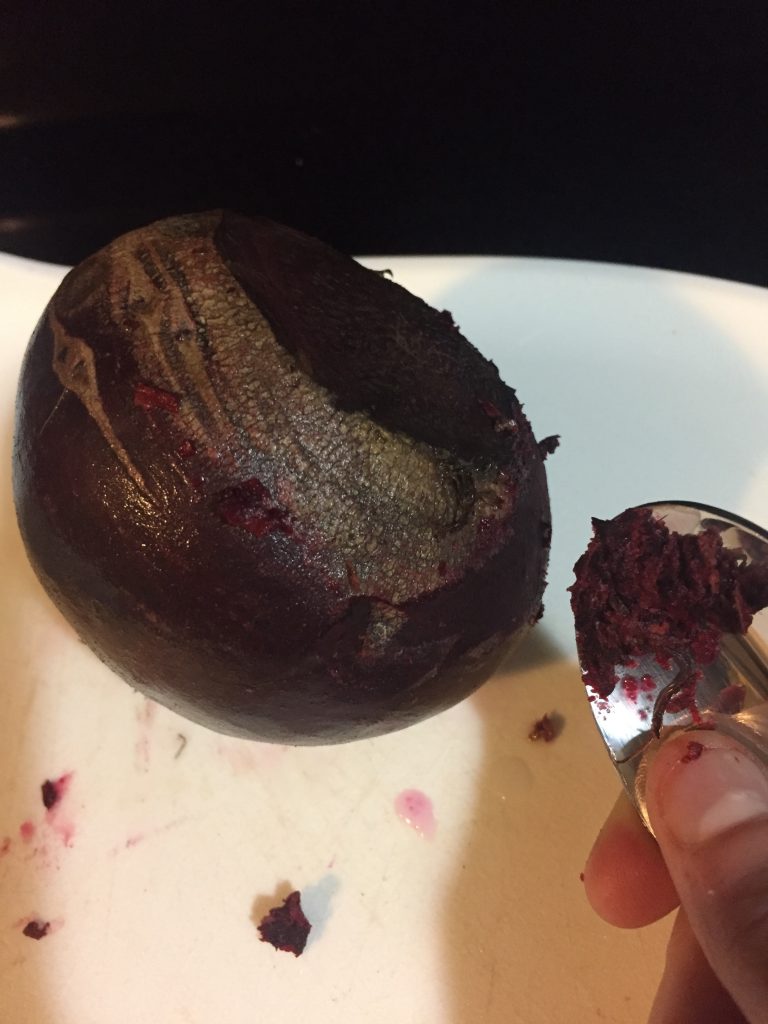
Beets pair well with something sour and are delicious with goat cheese, citrus, or tart apples. You can use roasted or juiced beets in a smoothie along with berries, or you can enhance their aromatic qualities by slicing them and roasting them with rosemary (see instructions for roasting here). Many upscale restaurants use a mandoline to slice their beets extra-fine and serve them as a raw salad. Be aware that because beets are so messy, you should take extra precautions about what you wear when working with them. They will also stain wooden cutting boards, so choose a plastic board if you have one and make a point of rinsing all utensils as soon as you’re done. When plating, be aware that the juices will run together, so avoid tossing red beets with other ingredients unless you’re willing to serve a dish that is fuschia.
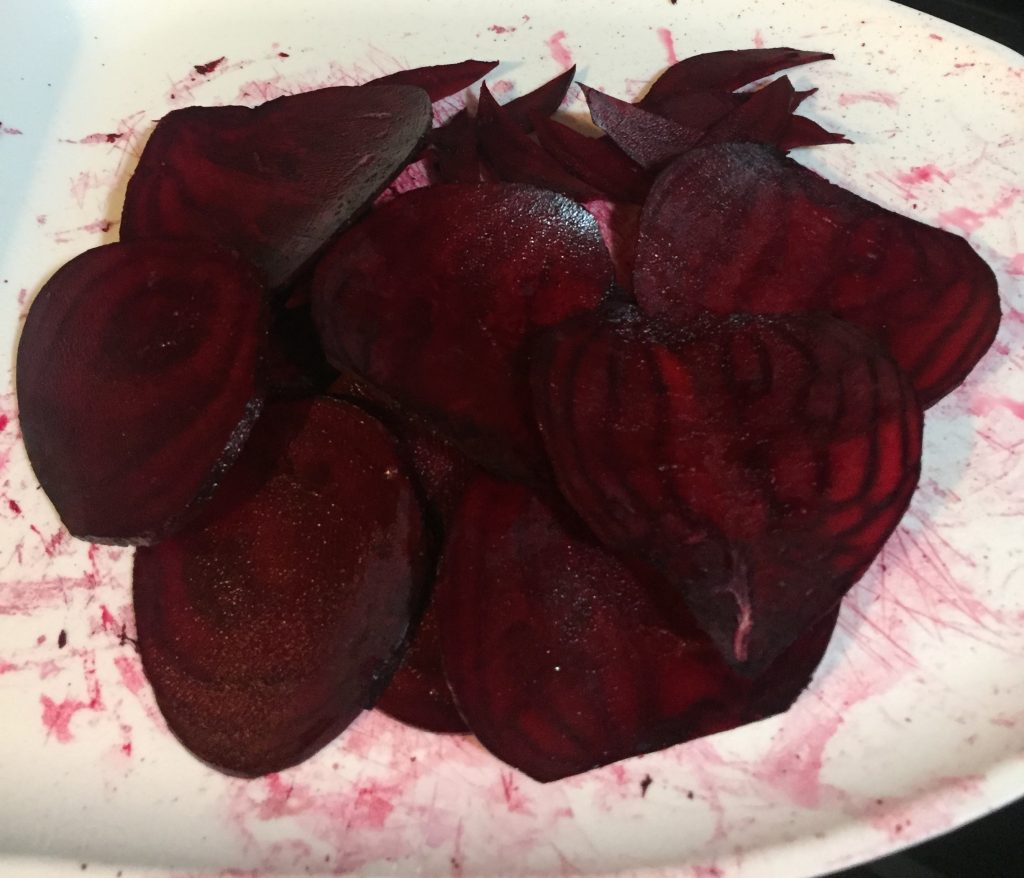
Brussels Sprouts
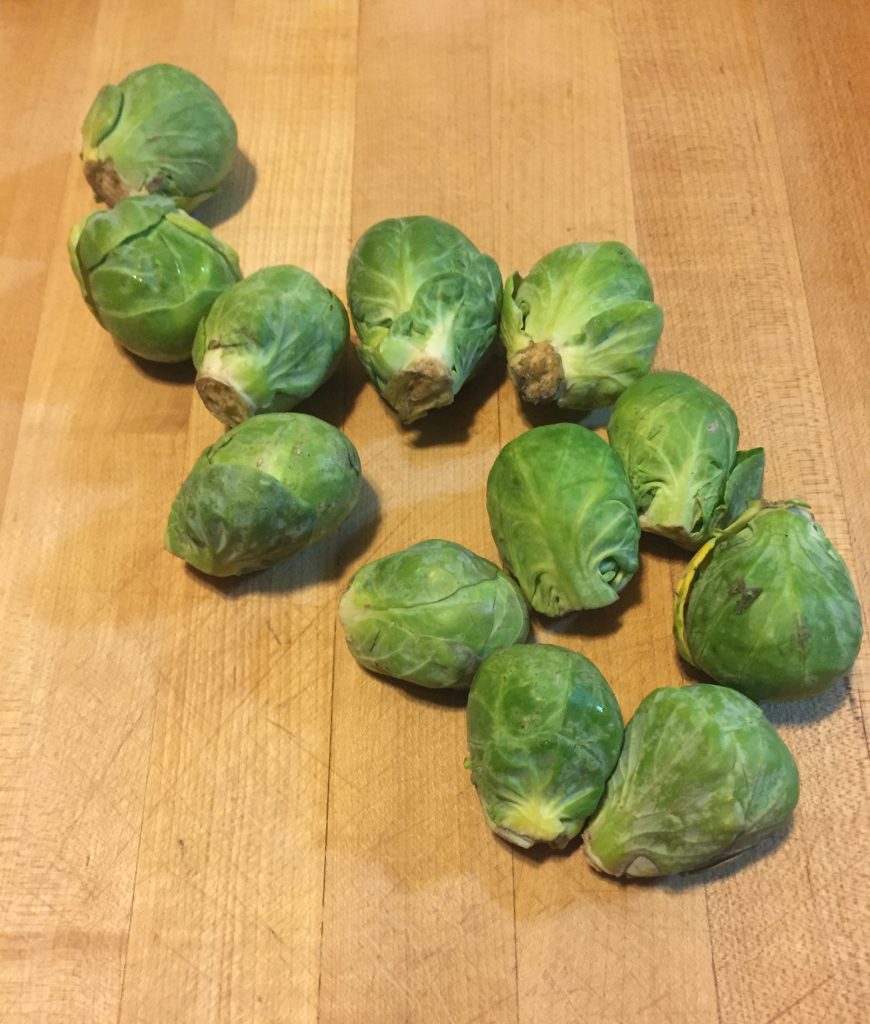
I’ve yet to figure out why so many people hate Brussels sprouts. If you like cabbage, you won’t have any trouble with Brussels sprouts, and if you know how to cook them, you might end up liking them better. If you’re new to Brussels sprouts, do not steam them or boil them; you’ll be missing out. You want to either roast or pan-sear them, preferably with some fat and some garlic, so that they develop a slight brown crust and a lot of great flavor.
The magic of Brussels sprouts comes from the amount of surface area that comes into contact with the pan, so you need to slice them before cooking. Chop off the remnant of stem at the bottom of each sprout and remove any leaves that seem yellowed or unappetizing in some other way. Remember, this food is just like a small cabbage, so you want to apply the same principles in terms of which parts of it you would normally eat. Once you’ve done some trimming, slice each sprout lengthwise into thirds. (You can slice them in half if you aren’t confident with your knife skills and are worried about losing part of a finger, but I prefer to cut each sprout into three slices because it doubles the number of flat surfaces that will come into contact with my pan.) You can find instructions for roasting vegetables here, but if you’re pan-searing you’ll need to heat up some olive oil and garlic (or bacon fat; bacon and Brussels sprouts are a natural, and delicious, pairing) and add the sprouts when the oil is hot. Leave them to brown for a minute or two, then stir. The green portions of the sprouts will take on a vibrant and vivid color as they cook, similar to the color change in steamed broccoli. Remove them from the pan once all the sprouts have turned this color and you have achieved sufficient browning on the edges. (You can see that the ones in the picture above got a little too brown in some spots, but they were still delicious!)
Although not as immediately appealing as roasted sprouts, you can also serve Brussels sprouts raw as part of a slaw or shredded salad, and you can use them in place of cabbage in most contexts. Among other things, Brussels sprouts pair well with nuts, bacon, hard cheese such as Parmesan, lemon juice, and caramelized onions.
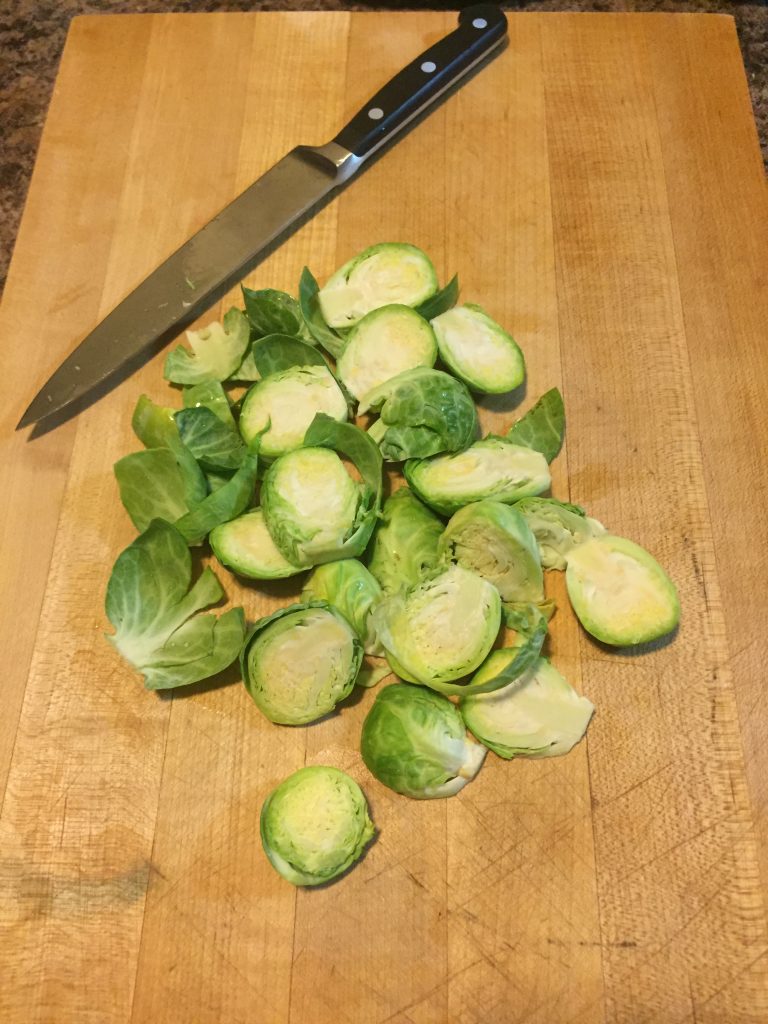
Want to see a particular ingredient profiled in a future post? Look me up on Twitter (@ditchtheramen) and let me know!
